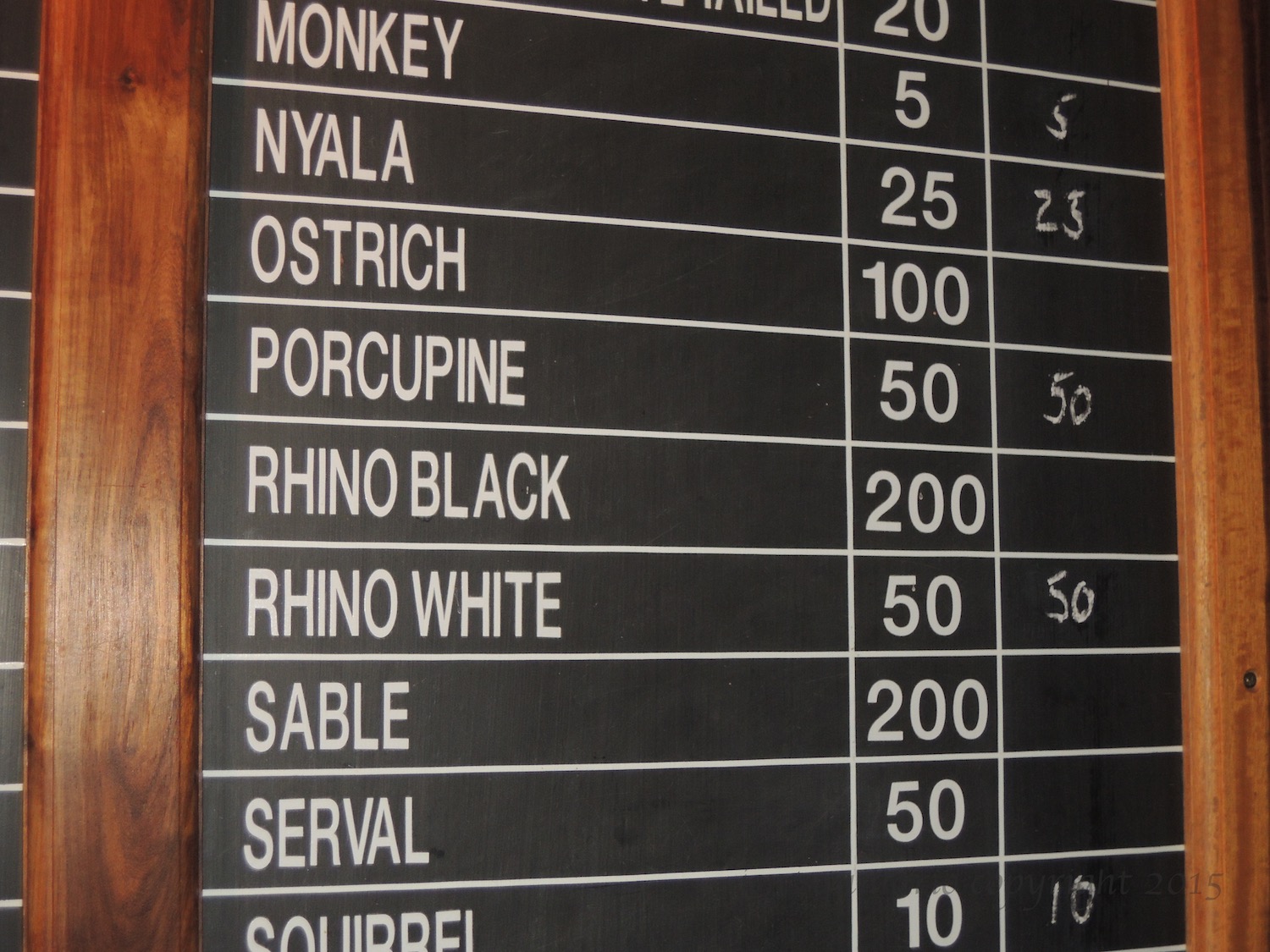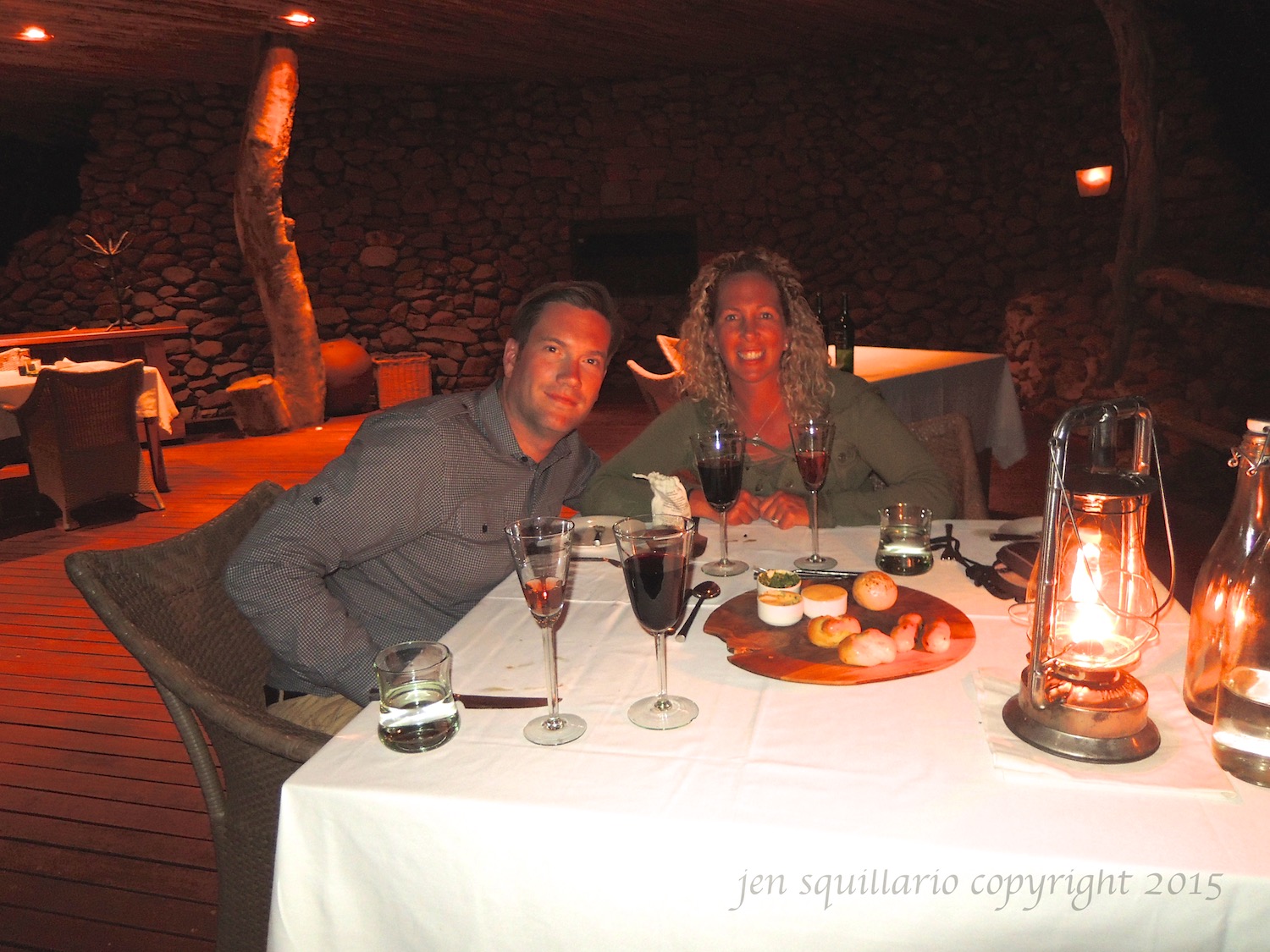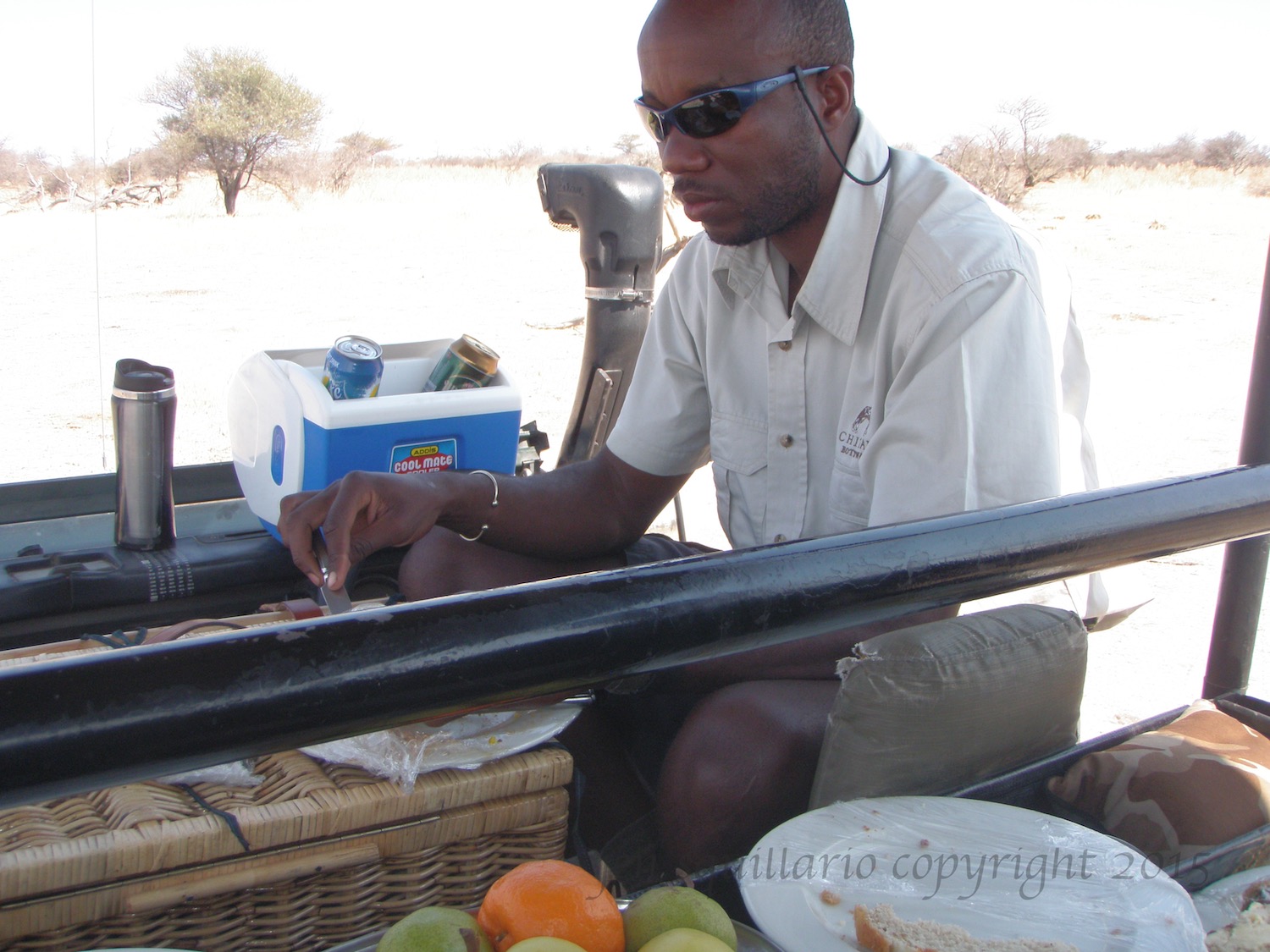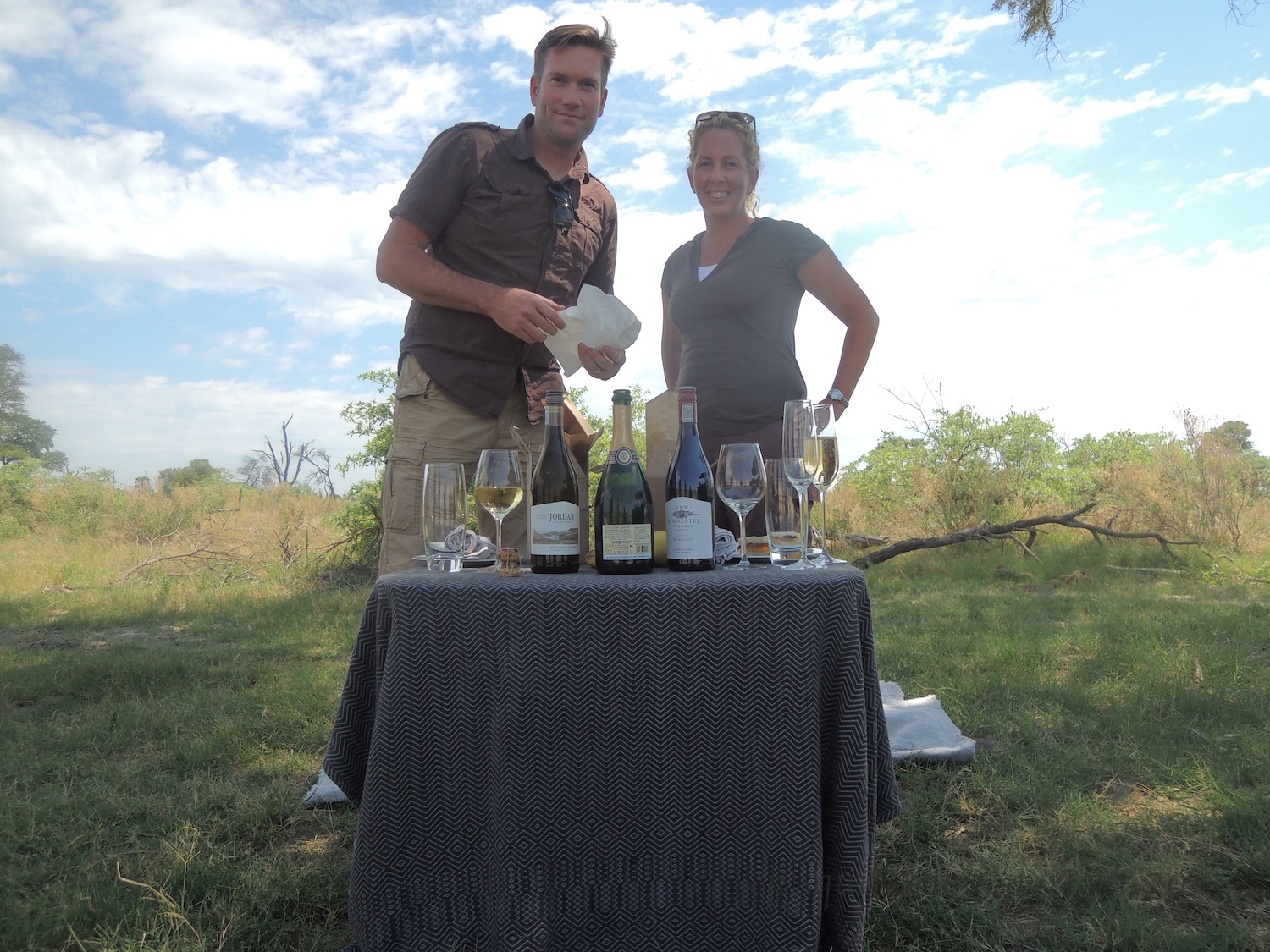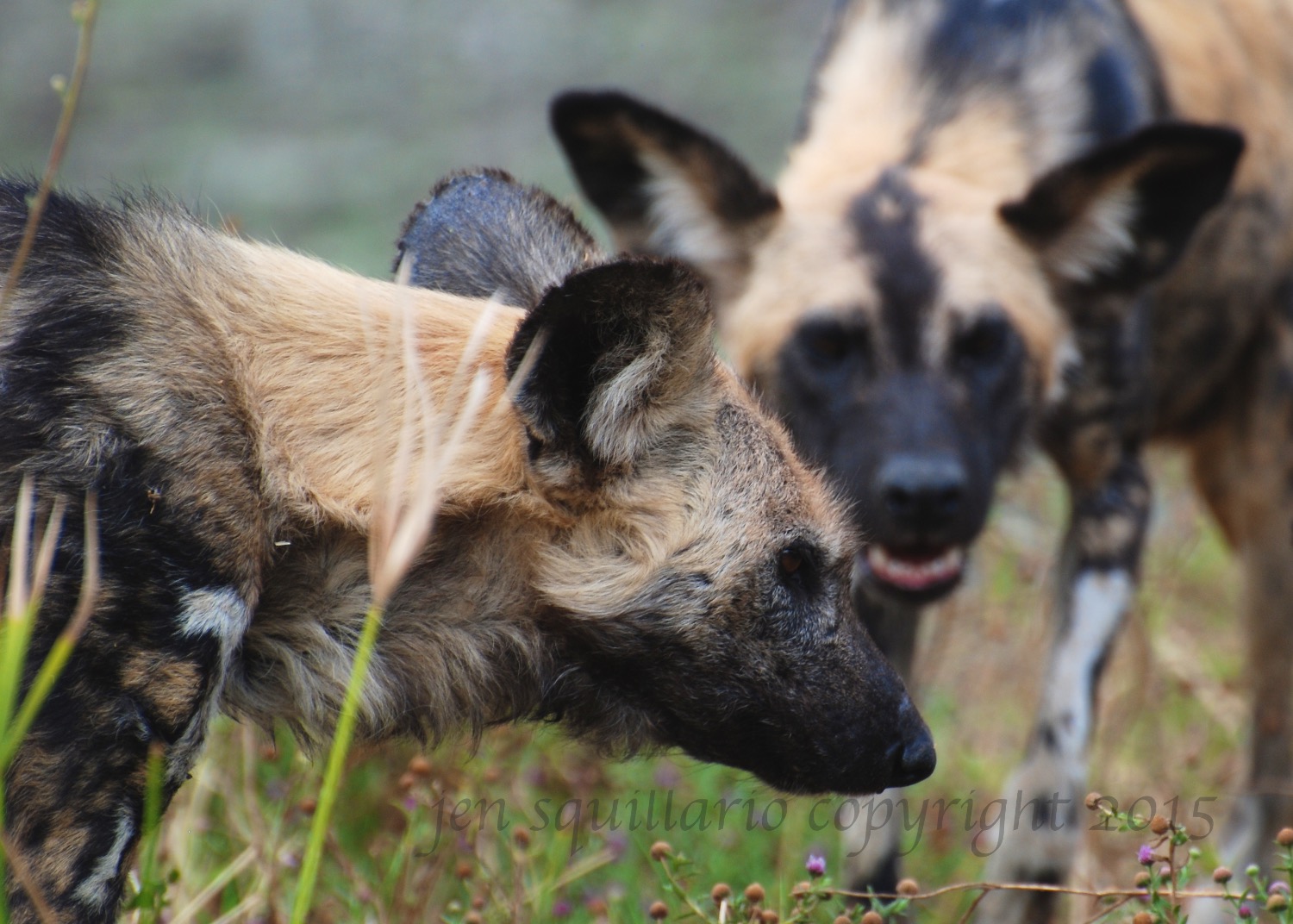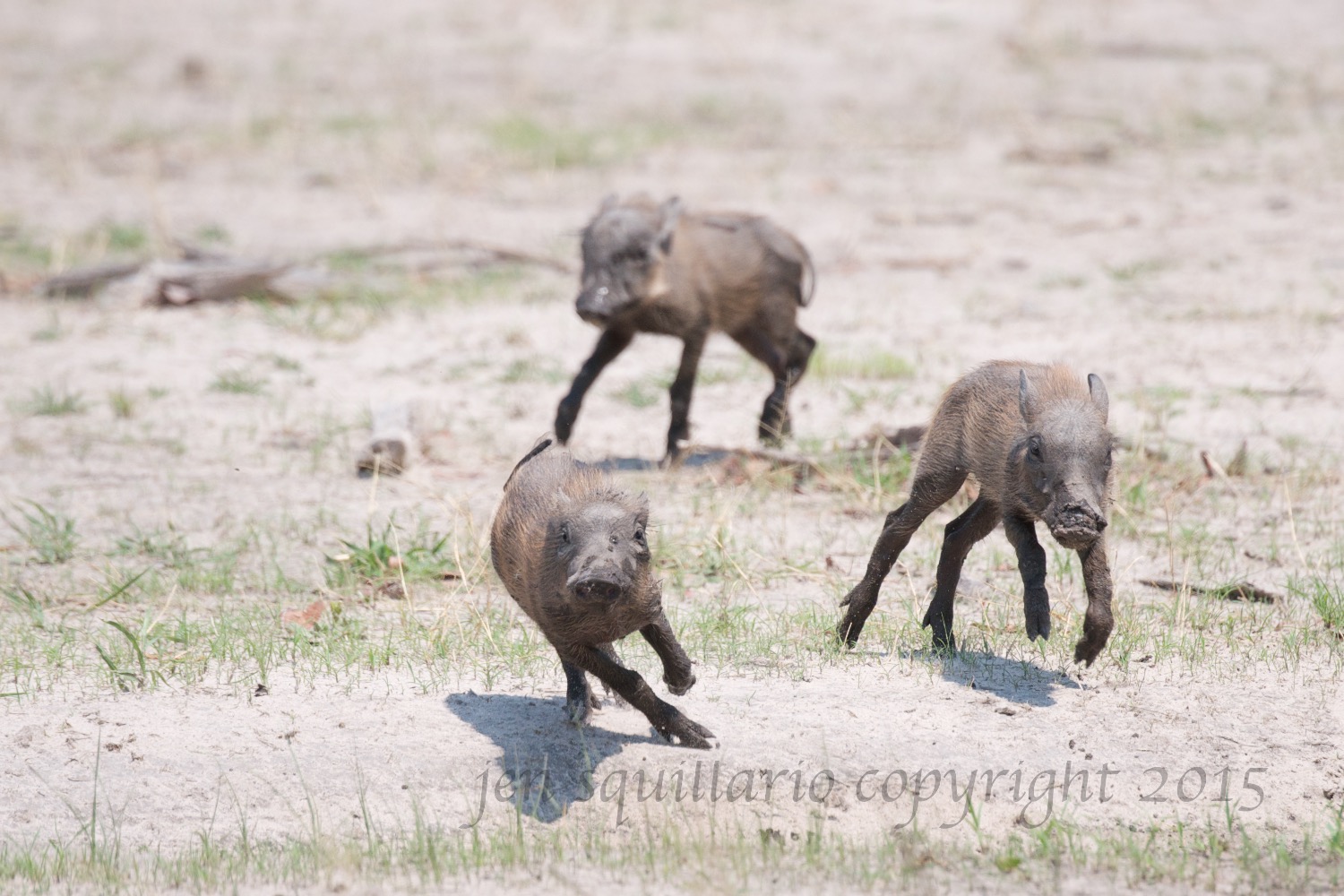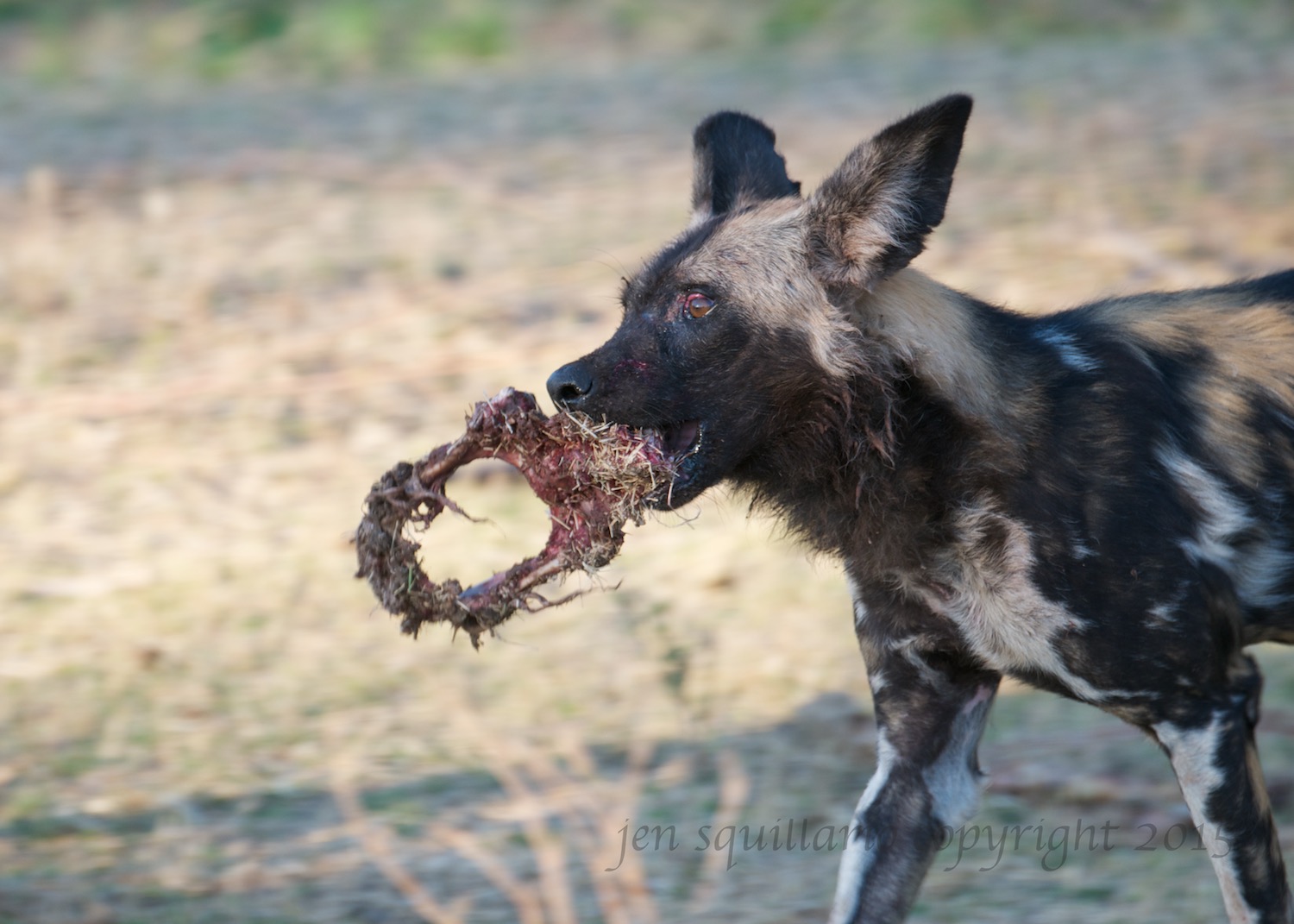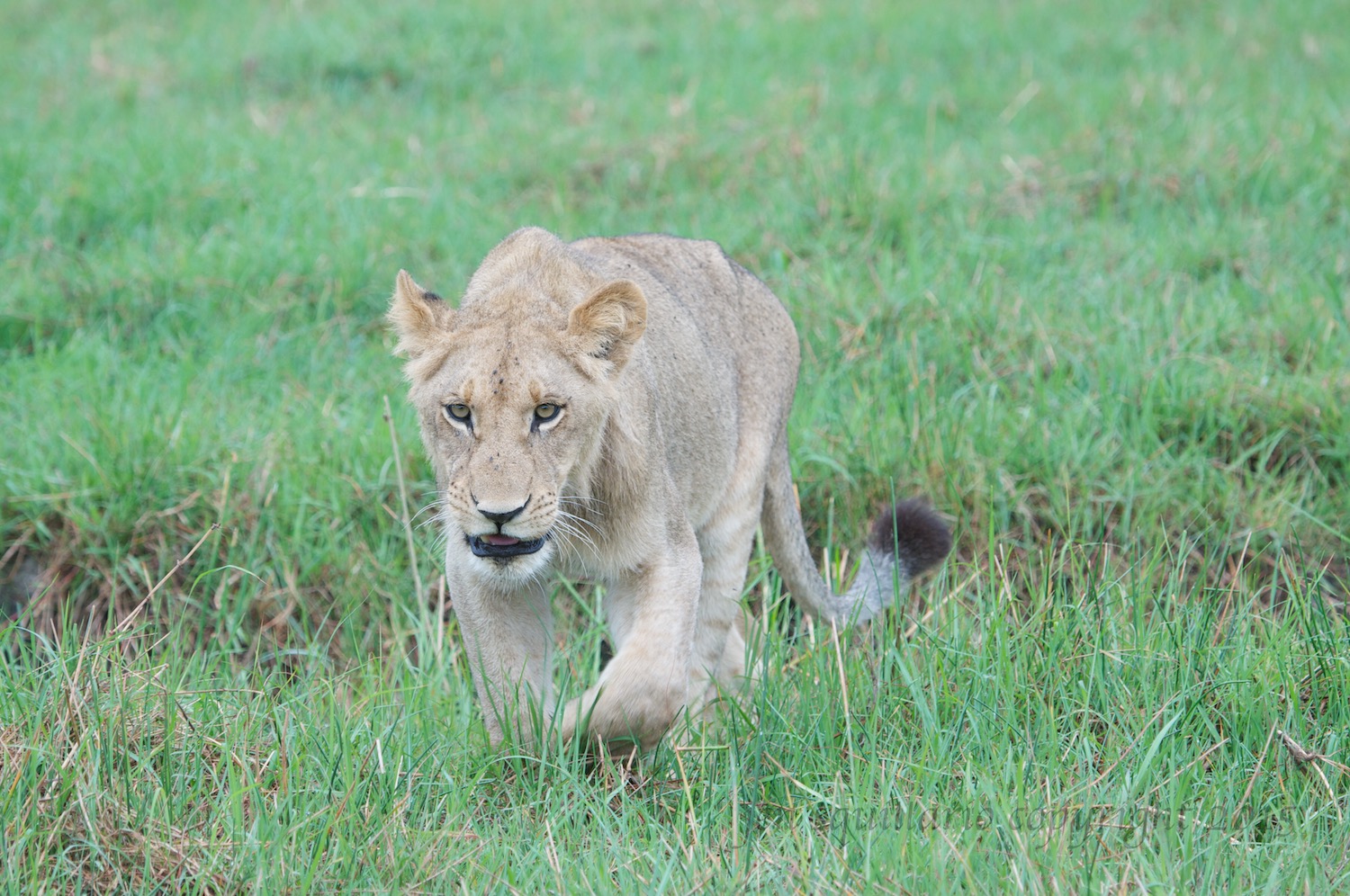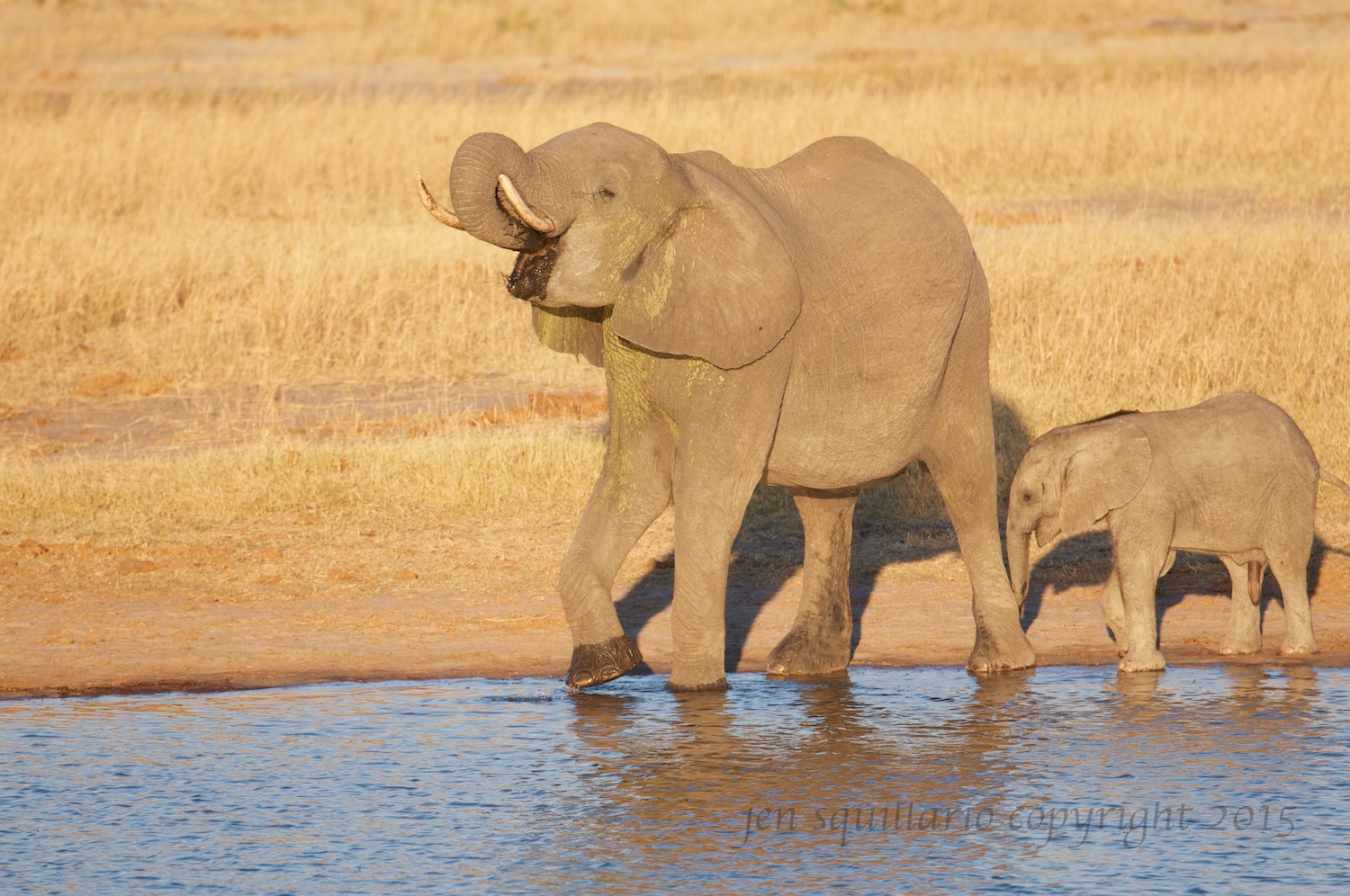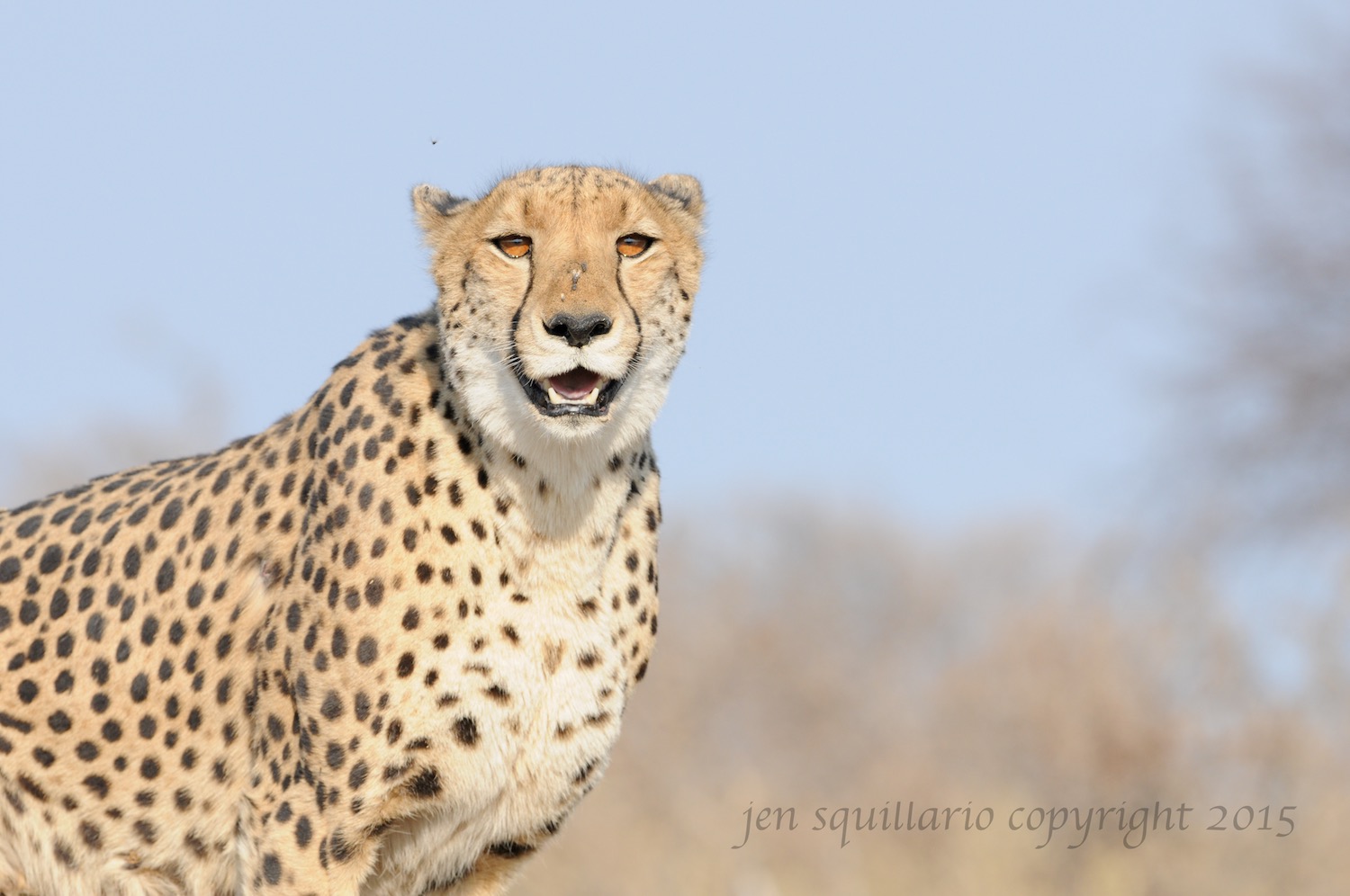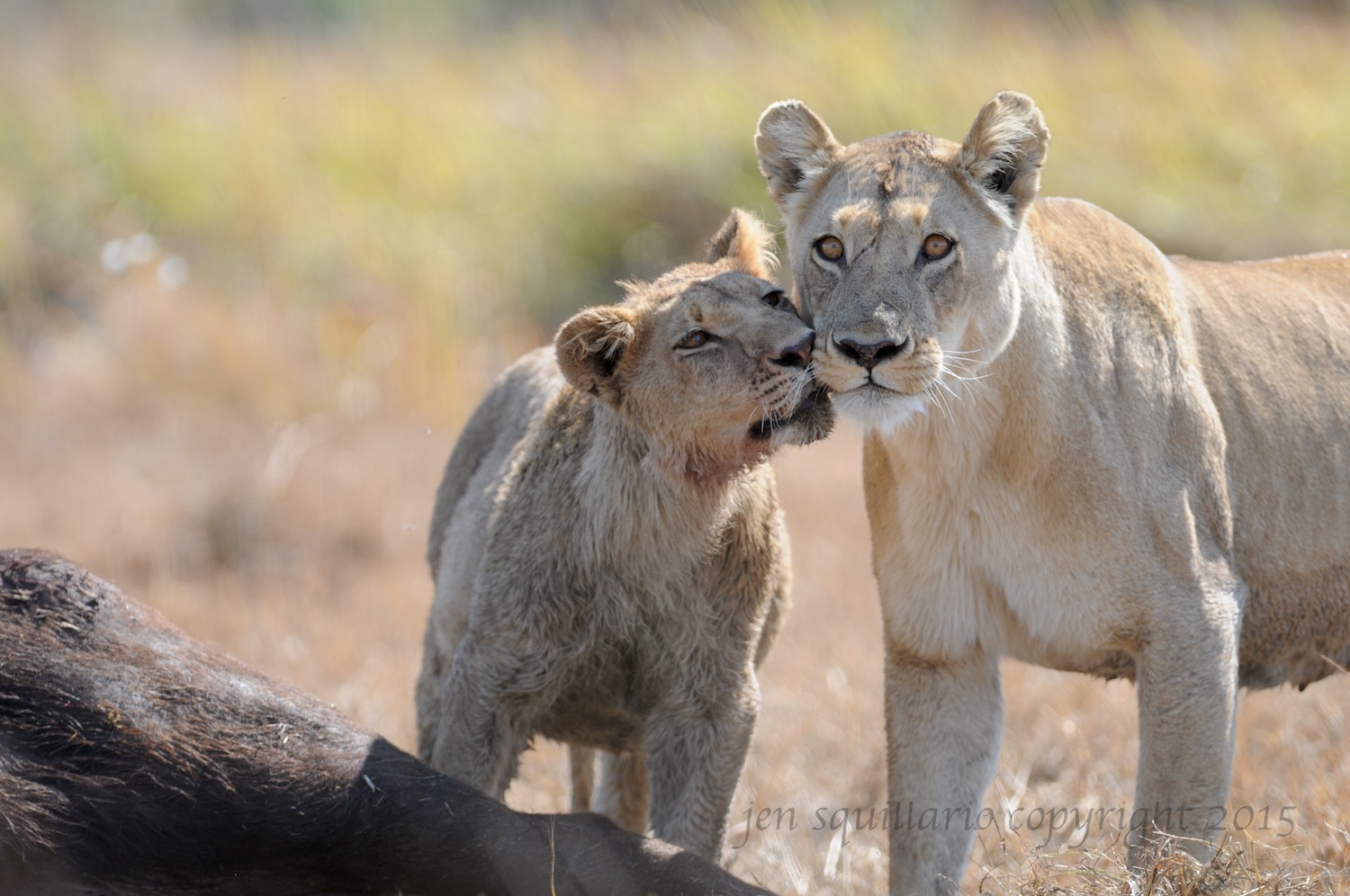I am not a professional photographer, but I have gone through much trial and error (really bad photos) to determine what is the right mix of camera equipment to bring on a photographic wildlife safari. This post covers what's in my camera bag and Ian's camera bag. Ian's camera bag is almost a duplicate of my bag so that we are not left camera-less if one of the cameras or lenses break or if something is lost or stolen. I am a Nikon user, but the general advice below is the same regardless of the brand of camera that you want to use.
Before I tell you what is in my camera bag, let's discuss what is not in my camera bag--my smart phone and tablet. I know, it's hard to part from these devices, but hear me out. First, poaching of animals, particularly elephants and rhinos, is a real problem. So, if you are taking real time photos and posting them on social media, you might be alerting potential poachers of animal locations. In fact, some safari lodges will ask you to not bring your phone with you on a safari drive for this reason. Second, if you are in a location where you have cell service (like South Africa), nobody wants to hear your cell phone buzzing or ringing while trying to watch a cheetah hunt a wildebeest calf. Seriously, it is just the worst. Third, you are on vacation. Fourth, they take crappy photos of moving animals. These devices simply don't have a fast enough shutter to catch a good photo of a moving animal. If you are just looking to take still photos of people and the landscape to share on social media then it probably doesn't matter that phones and tablets don't take high quality photos. But, if you want to use these photos in a book or in frames, you will be better served by using a real camera.
The National Geographic Earth Explorer bag with the Nikon D80 and the Nikon AF-S DX NIKKOR 18-300mm f/3.5-5.6G ED VR Lens.
As your smart phone and tablet are not going in your bag, you'll need a camera. If you are familiar with or have time to become familiar with a DSLR camera before your safari, I highly recommend using one. But, if that is not something that interests you, then you'll want to get a good "point and shoot" camera with a focal length equivalent of 300mm to 400mm, which has some type of setting like a sports setting that increases the shutter speed and has image stabilization. (Some believe that you do not need more than 200 mm, but a large majority of my wildlife photos are taken between 270mm and 400mm). I suggest going to www.bhphotovideo.com (B&H Photo) to price out these cameras. B&H Photo is located in New York City, but it has fantastic customer service online and over the phone and can help you choose the right camera. I do use a small point and shoot (that does not have telephoto capabilities) that fits in a pocket for photos when I don't want to lug around my big camera, like at dinner, and only want to take what I call atmospheric photos--photos that I want for the memory and to help tell a story, and not necessarily for use on someone's wall. Here are a few examples of shots with my small point and shoot to scroll through:
If you want to go with a DSLR camera, but aren't ready to buy one, rent one. I've used www.lensrentals.com a number of times for camera and lens rental. If you are going to rent a camera, make certain that you get it a few days before leaving for your trip so that you can practice. If you are just starting with a DSLR camera, I suggest something like the Nikon D90. It is a great entry level DSLR. I started with its predecessor, the Nikon D80, but have used the Nikon D90. I still use the D80 today, which Ian usually carries. We put a lens on it that has a bit more flexibility than the telephoto lens on my camera. Ian and I use the D80 to shoot wildlife but also more of those atmospheric photos while out on safari.
I use the Nikon D300s; this camera is not for beginners. It is a semi-professional camera. I recommend it to those who are already comfortable with DSLR cameras and are no longer using the automatic settings on the camera.
Second in importance to the camera is the lens. For your DSLR camera, You will want a lens that can go to at least 300mm. An inexpensive lens to start with, and the one I started with, is the Nikon AF Zoom-NIKKOR 70-300mm f/5 5.6. Here are a few examples of photos taken with the Nikon AF Zoom-NIKKOR 70-300mm f/5 5.6 to scroll through:
A lens that I love for all travel everywhere, and the one I usually keep on Ian's Nikon D80 (though I do used it on the Nikon D300s), is the Nikon AF-S DX NIKKOR 18-300mm f/3.5-5.6G ED VR Lens. It shoots wide angle and telephoto and is small and light. I can't say enough about how useful this lens can be. Here are a few examples of shots taken with the Nikon AF-S DX NIKKOR 18-300mm f/3.5-5.6G ED VR Lens to scroll through:
The lens I keep on my Nikon D300s is the Nikon AF-S NIKKOR 80-400mm f/4.5-5.6 ED VR Lens. It is a heavy lens that I use solely for shooting wildlife while on safari in Africa. I love having the ability to shoot out to 400mm. I recommend renting this lens if you really want to take some serious wildlife photos (and think you'll be able to hold it steady or if you plan to use a monopod). Here are a few examples of shots taken with the Nikon AF-S NIKKOR 80-400mm f/4.5-5.6 ED VR Lens:
My favorite lens, which I have rented on a few occasions, is the Nikon AF-S NIKKOR 300mm f/2.8G ED VR II Lens. This lens takes amazing photos, but I would only recommend it to those who are familiar with shooting wildlife as the focal length is fixed at 300mm. I've always loved www.lensrentals.com's review of this lens: "Do you know the difference between a fairy tale and a Southern fairy tale? Well, a fairy tale starts ‘once upon a time’. A Southern fairy tale starts ‘Yall aint gonna believe this S#@t’. The 300mm f/2.8 AF-S VR II is the Southern fairy tale of camera lenses." This lens takes amazingly crisp photos. Here are a few examples of shots taken with the Nikon AF-S NIKKOR 300mm f/2.8G ED VR II Lens:
For a camera bag, particularly on a photographic safari in Africa, I recommend the National Geographic Earth Explorer (pictured above) (available at www.bhphotovideo.com). It's light and has plenty of room for your cameras, camera equipment, and even a laptop. Plus, it fits right in with the requisite safari colors.
What else is in the camera bag/s:
- A GoPro. This is a new addition to my camera bag.
- Some kind of plastic bag or cover that I use to cover the camera and lens when it drizzles, the safari truck is submerged in high water, or it's really dusty.
- Two batteries and two chargers for each camera, one packed in my bag, the other in Ian's.
- An excessive amount of memory cards distributed between the two bags. I have too many of these, but I shoot in the raw, which takes up a lot of space. I never want to feel as if I have to hold back because I may run out of space on my memory cards.
- Two Ruggard Memory Cards cases (one for each bag) to contain those memory cards that are full of what promises to be amazing photos.
- Ziplock bags (You never know what you're going to need them for).
- Masking tape (It's good for taping things that break back together.).
- My camera and lens manuals (just in case).
- Two (one for each bag) lens cleaner "pens" (It has a brush and a spot remover).
- Cards with phone, email, etc. to hand to you new safari buddies. If it is all you have, a business card will do (but remember you are on vacation).
**The banner photo for this blog of me taking a photo of buffalo was taken by Ian in a hide at a water hole at Little Makalolo, Hwange National Park, Zimbabwe, www.wilderness-safaris.com.



